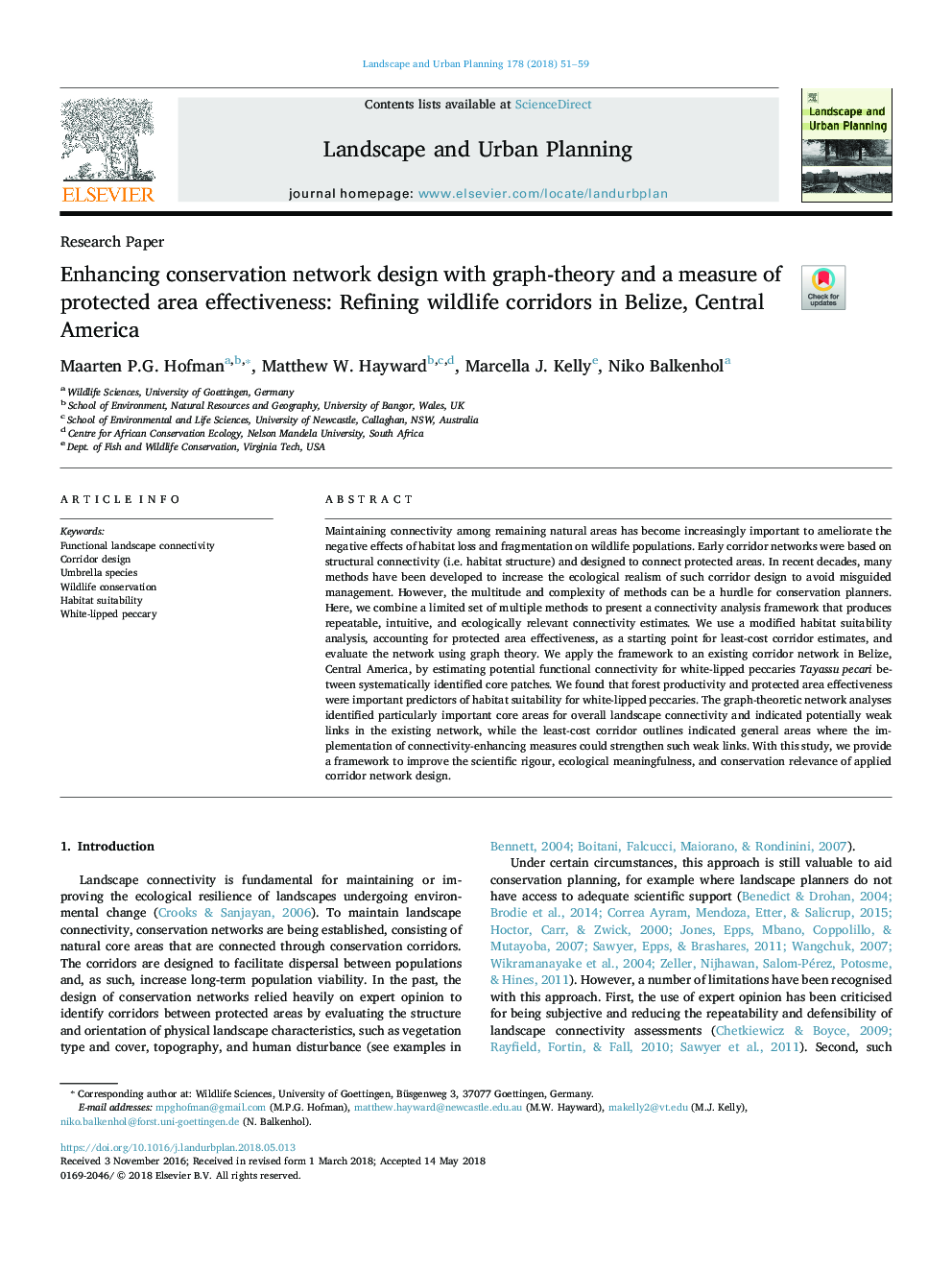| Article ID | Journal | Published Year | Pages | File Type |
|---|---|---|---|---|
| 7459490 | Landscape and Urban Planning | 2018 | 9 Pages |
Abstract
Maintaining connectivity among remaining natural areas has become increasingly important to ameliorate the negative effects of habitat loss and fragmentation on wildlife populations. Early corridor networks were based on structural connectivity (i.e. habitat structure) and designed to connect protected areas. In recent decades, many methods have been developed to increase the ecological realism of such corridor design to avoid misguided management. However, the multitude and complexity of methods can be a hurdle for conservation planners. Here, we combine a limited set of multiple methods to present a connectivity analysis framework that produces repeatable, intuitive, and ecologically relevant connectivity estimates. We use a modified habitat suitability analysis, accounting for protected area effectiveness, as a starting point for least-cost corridor estimates, and evaluate the network using graph theory. We apply the framework to an existing corridor network in Belize, Central America, by estimating potential functional connectivity for white-lipped peccaries Tayassu pecari between systematically identified core patches. We found that forest productivity and protected area effectiveness were important predictors of habitat suitability for white-lipped peccaries. The graph-theoretic network analyses identified particularly important core areas for overall landscape connectivity and indicated potentially weak links in the existing network, while the least-cost corridor outlines indicated general areas where the implementation of connectivity-enhancing measures could strengthen such weak links. With this study, we provide a framework to improve the scientific rigour, ecological meaningfulness, and conservation relevance of applied corridor network design.
Related Topics
Life Sciences
Agricultural and Biological Sciences
Ecology, Evolution, Behavior and Systematics
Authors
Maarten P.G. Hofman, Matthew W. Hayward, Marcella J. Kelly, Niko Balkenhol,
